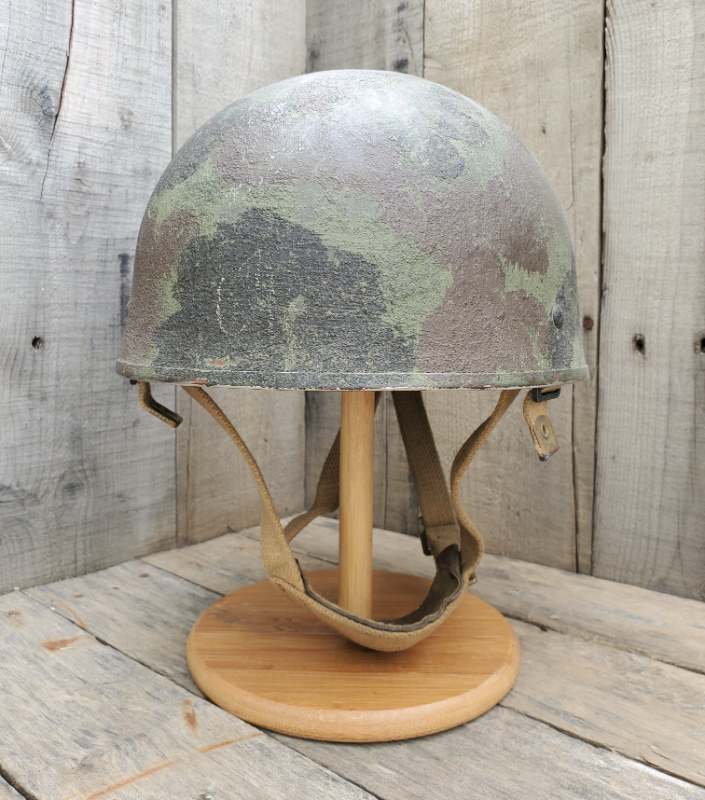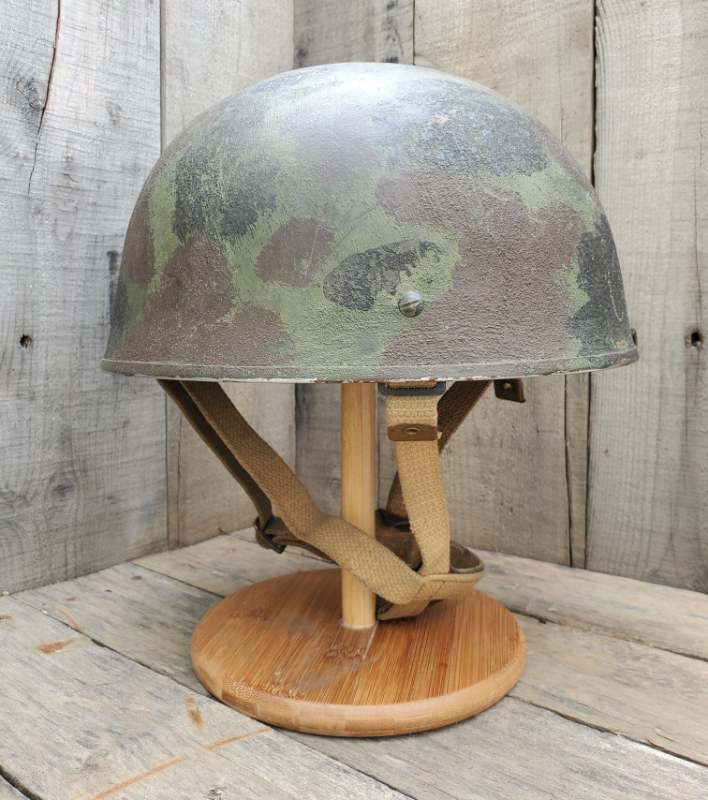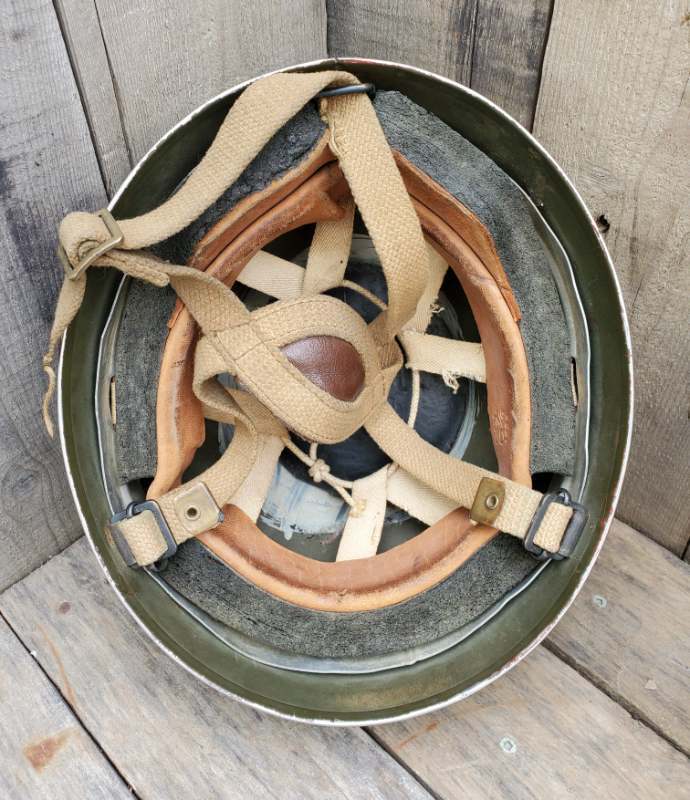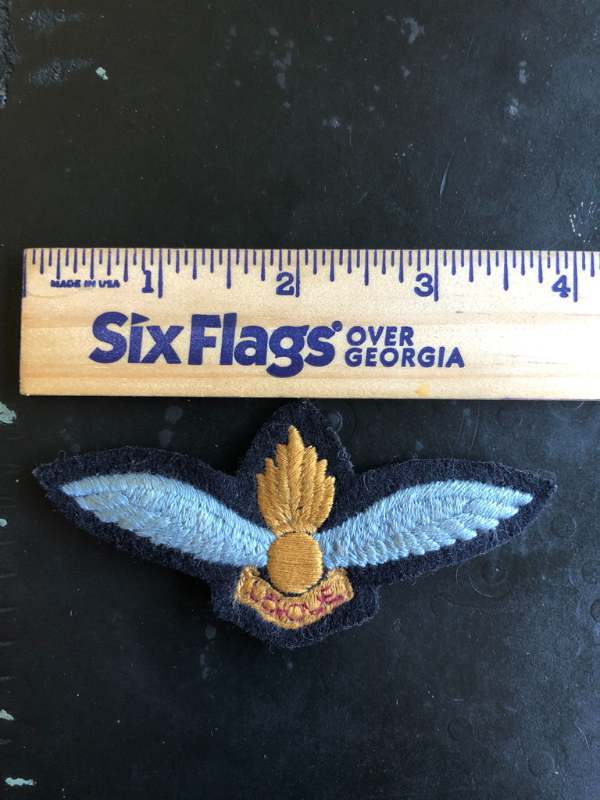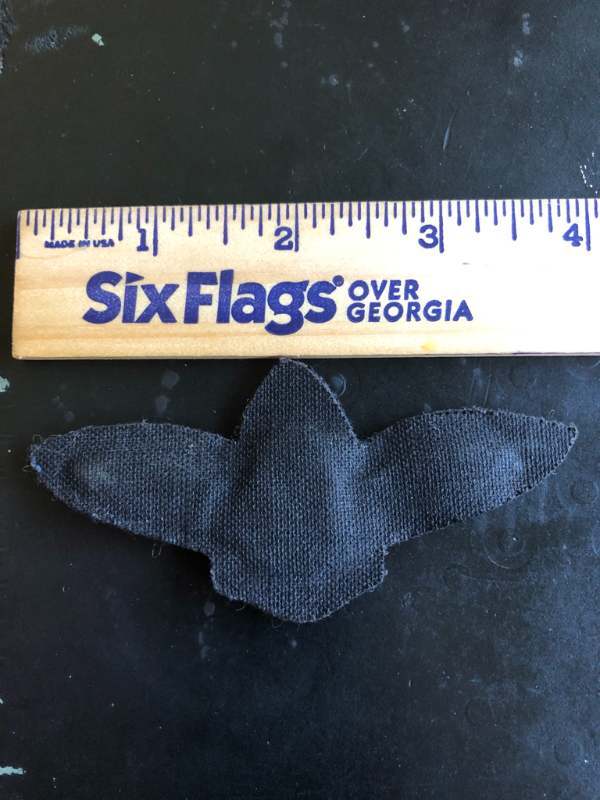Search the Community
Showing results for tags '20th Century'.
-
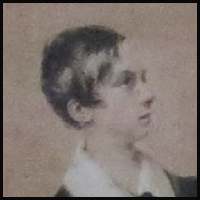 This topic is meant to serve as a sort of "Table of Contents" for various useful threads that discuss the basics/details of uniforms, insignia, equipment and medals issued by the UK, making it easier to find out where to learn and post about your great collection pieces or current subject of research. Every thread here is open and active, so please feel free to post your thoughts, questions and photos as often as you'd like to share. While they are meant to serve as good reference for those wanting to learn, they're also meant to be great discussions between members. Please, enjoy the discussions and add to these threads. Thanks! If you think a thread should be added to this directory, just message any Ground Crew Member or Moderator. MEDALS & AWARDS - - - - - - - - - - - - - - - - - - - - - - - - - - - - - - - - - - - - - - - - - - - - - - - - Crimea Medal (1854-56) Distinguished Conduct Medal (DCM) Distinguished Service Order (DSO) Military Cross (MC) Punjab Medal (1849) War Medal, 1939 to 1945 WWII Defense Medal UNIFORMS, HELMETS & HEADGEAR - - - - - - - - - - - - - - - - - - - - - - - - - - - - - - - - - - - - - - - - - - - - - - - - Uniform Reference Books Bearskin Helmets: The Iconic Headdress of the Foot Guards South Wales Borderers, Officer's Field Service Caps British Army and RAF contract numbers Part 1:6/CLO... British Army and RAF contract numbers Part 2: A/78/CLO... used from 1961 to 1980 BADGES & INSIGNIA - - - - - - - - - - - - - - - - - - - - - - - - - - - - - - - - - - - - - - - - - - - - - - - - Airborne Pegasus Patches Airborne WWII Cloth Insignia British Royal Cyphers on Buttons Glider Pilot Regiment Brevets The Kings Own Scottish Borderers RFC / RAF Cloth Wing Badges Robin Hood Formation Signs Patches WW2 Era British Paratrooper Wings
This topic is meant to serve as a sort of "Table of Contents" for various useful threads that discuss the basics/details of uniforms, insignia, equipment and medals issued by the UK, making it easier to find out where to learn and post about your great collection pieces or current subject of research. Every thread here is open and active, so please feel free to post your thoughts, questions and photos as often as you'd like to share. While they are meant to serve as good reference for those wanting to learn, they're also meant to be great discussions between members. Please, enjoy the discussions and add to these threads. Thanks! If you think a thread should be added to this directory, just message any Ground Crew Member or Moderator. MEDALS & AWARDS - - - - - - - - - - - - - - - - - - - - - - - - - - - - - - - - - - - - - - - - - - - - - - - - Crimea Medal (1854-56) Distinguished Conduct Medal (DCM) Distinguished Service Order (DSO) Military Cross (MC) Punjab Medal (1849) War Medal, 1939 to 1945 WWII Defense Medal UNIFORMS, HELMETS & HEADGEAR - - - - - - - - - - - - - - - - - - - - - - - - - - - - - - - - - - - - - - - - - - - - - - - - Uniform Reference Books Bearskin Helmets: The Iconic Headdress of the Foot Guards South Wales Borderers, Officer's Field Service Caps British Army and RAF contract numbers Part 1:6/CLO... British Army and RAF contract numbers Part 2: A/78/CLO... used from 1961 to 1980 BADGES & INSIGNIA - - - - - - - - - - - - - - - - - - - - - - - - - - - - - - - - - - - - - - - - - - - - - - - - Airborne Pegasus Patches Airborne WWII Cloth Insignia British Royal Cyphers on Buttons Glider Pilot Regiment Brevets The Kings Own Scottish Borderers RFC / RAF Cloth Wing Badges Robin Hood Formation Signs Patches WW2 Era British Paratrooper Wings-
- 20th Century
- Victorian Era
-
(and 2 more)
Tagged with:
-
Hi I’ve been searching the web everywhere trying to find information on a Burberry officers greatcoat and I’ve found that the label is correct for a WWII time period. But just wanted some more advice before I obtain it and if real how much is it worth so I don’t get ripped off? Any advice would be greatly appreciated
-
I have quite a few examples in my collection, including these three Mons 1914 Stars, one each for the Welsh, South Wales Borderers and Royal Welsh regiments
-
I have quite a few of these, I will post some at a time, starting with the great war; first the welsh fund great war post card collection, I believe this is the full set of 12 cards
-
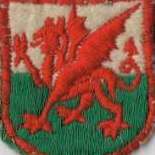
20th Century South Wales Borderers Officers FS Cap, Edwardian Period
JerryBB posted a topic in Uniforms, Insignia, Equipment & Medals
-
-

20th Century MKIV raw edge Helmet with original hessian cover
JerryBB posted a topic in Uniforms, Insignia, Equipment & Medals
this came from a very well respected Falklands War collector and it is a veterans bring back of his own MKIV. the shell is the rimless version only produced by BMB in 1952, retrofitted with the later liner pattern, dated 1980 and 1982, which these often have misdated parts. the sock is dated 1976, the cruciform is dated 1982 whilst the other part is dated 1980 and made by Compton Webb and the shell is named inside to CHAPPELL 6230 and also numbered 581 0n a yellow square -
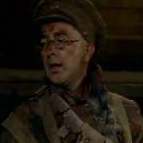
20th Century Mk I Brodies, 1916 Transitional Helmet
AustinO posted a topic in Uniforms, Insignia, Equipment & Medals
This one was a recent pickup and represents an interesting transitional helmet. The shell is a standard MK I rimless showing a heavy green paint over a lighter green paint. The heavy textured paint is consistent on the inside of the shell, and I am assuming factory applied. The liner is the early pattern tongued variety. Looking at the chinstrap configuration, it is the same as what's seen on later helmets with one piece leather band being riveted to the shell under the liner. As such, this helmet would have been produced at some point between April and July of 1916 - as the factories ran out remaining stock of earlier liners. The steel lot stamp is FS 152, and interestingly enough in doing my research I found similarly configured helmet on a dealers website - probably assembled within weeks if not days of each other! Anyway, an interesting helmet to document as it represents a point in time during the development and transition from War Office Pattern to Mk I and it's further improvements. -
Banging in the New Year. Had the opportunity many years ago, when in the UK, to pick this one up at a local antique show. A 1941 dated RAF drum. Sadly, the design is a transfer and not painted (although the borders are painted), but still makes a great appearance and with a piece of glass on top serves as a fine table in the den.
-
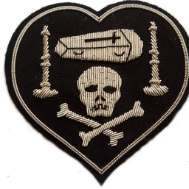
20th Century World War I Ceramic Memorial Plaque
Bruce Linz posted a topic in Uniforms, Insignia, Equipment & Medals
Hello, I am hoping to get some information on this World War I Ceramic Memorial Plaque. I am familiar with the Death Penny, but have never seen one of these plaques before. I see from the back stamps that it was made by the Royal Household Company. That company calls this "The Century Memorial Tablet". It is named to Lance Corporal Albert Drury, 1/7 West Yorks. I confirmed that this was Killed in Action on 03 September 1916. I have included three photos. I am also interested in its value. Thank you for your help. Semper Fi, Bruce Linz -
This photo is from my Father's scrapbook. He took several photographs of this Anti-Aircraft gun. It was probably taken in January 1945 in Italy. If it was this time of year, the photo would have been taken in the Apennine Mountains north of Florence or in the foothills to the West closer to Lucca. He always described it as: "British troops shooting a German gun using Italian shells" As with many of Dad's stories, my brother and I would roll our eyes as if to say "Aw Dad, you expect us to believe that." As we grew up and investigated his stories---such as when he saw a camel grazing under the Leaning Tower of Pisa---we learned some of them had some Truth to them or they were totally true. First Q: What type of troops are these? British? That is fairly east to research. The British 8th Army and were fighting on the Eastern side of the Front. However, it is possible that some of the independent assets were placed under the US 5th Army or one of its corps. I have a detailed organizational table for the Spring Offensive but I don't see any with the Americans. I wondered if they were Canadian. Most of the Canadian generally remained grouped under their corps. Also they began pulling out of Italy sometime around February. Can anything be read from their insignia? Is that an 8th Army patch or a division patch? My answer is: British. Second Q: What type of AA gun is this? Third Q: Was there any Italian ammo that could be used in this gun? Or did the Italian have this gun in their arsenal? IF the answer to the last two Q's were this was a BOFORS, then the British and Italians may used them. Help me solve another of my Father's stories. One possible Answer is---these British chaps were pulling a joke on the American Yanks. That really doesn't fit as my Father was in the Artillery and had some knowledge of guns and markings etc.
-

20th Century Interwars Officer's Wolseley Sun Helmet South Lancs Regt
JerryBB posted a topic in Uniforms, Insignia, Equipment & Medals
-
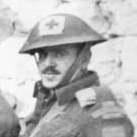
20th Century British SF, CTT Helmet as used by SF/CT Units
Mark K posted a topic in Uniforms, Insignia, Equipment & Medals
One I needed for the UK composite side of my collection that I received months ago that I just got a chance to drag out into the light and photograph.. British 2007/2008 SF, CTT as issued to British Special Forces/Security Forces and Counter Terrorism units.. These were a predecessor to the British Mk 7 / AC900 and share many similarities in construction the helmet body by all appearances seems to be the same with the exception of them being painted black as opposed to tan with a sand textured finish to the exterior of the helmet body.. The chinstrap/harness in this particular helmet has been retrofitted with an example from a Mk 7 helmet.. Which IMO opinion would be more comfortable and give a more stable fit than the simpler three-point system the SF, CTT was issued with it is not uncommon for soldiers to modifying there kit if they can get away with it... If my information is correct these were produced and 1st issued out in 1999 and seen many years of service, I can find very little in the form of information in regards to these particular helmet systems, with the exception of they were constructed with multiple layers of Aramid fibres which offers a high level of ballistic protection against projectiles and shrapnel... Regards Mark -

20th Century Hi Cut Ballistic Composite Helmet
Mark K posted a topic in Uniforms, Insignia, Equipment & Medals
Hi Cut Ballistic Compo sporting a custom made hessian and scrim cover IMO this particular example was produced by MSA... The helmet weighs in at 1593 grams so just over 1.5 kilo's it has been fitted with a Fast Ops Core OCC Dial up liner with EPP padding, And a fit band head loc four point harness system with glass case and ballistic glasses. As seen in the images below the helmet band is sporting a British service/Zap number with blood typing ,It is a known fact that certain elements of the British Special Forces used these particular types of helmets for a period of time... It has been suggested by a knowledgeable friend and collector that it may have seen service in the SBS, the NVG mount on the front was designed for use on the ACH/MICH DE, and is now fitted with a Rhino Night vision mount with J arm and is sporting a dummy AN/PVS-14 Night Vision Monocle to use for the purpose of display.. As well as being outfitted with a Harris under the helmet tactical earpiece and microphone headset... Regards Mark -
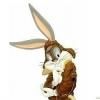
20th Century Regiment Cap Badge of the 17th / 21st Lancers (Death or Glory)
Thor996 posted a topic in Uniforms, Insignia, Equipment & Medals
Not sure of the period, but I believe it to be Second World War. From the web, I found the following information about the regiment: A Regiment Cap Badge of the 17th / 21st Lancers (Death or Glory) .The 17th/21st Lancers was a cavalry regiment of the British Army from 1922 to 1993. It was formed in 1922 in England by the amalgamation of the 17th Lancers (Duke of Cambridge's Own) and the 21st Lancers (Empress of India's). From 1930 to 1939 it was deployed overseas; first in Egypt for two years, and then in India for seven. In 1938 the regiment was mechanised. On the outbreak of war, the regiment immediately transferred back to the UK. When it arrived it had no equipment apart from rifles and revolvers. Although it was designated as a Heavy Armoured Regiment it never received the equipment; initial training was with a few Medium tanks and some lorries. It was designated as a Divisional Cavalry Regiment in 1940 but given machine guns and vehicles to make it a Motor Machine-Gun Regiment. In this form it was part of the 1st Motor Machine Gun Brigade (with the 16th/5th Lancers, 2nd Lothians and Border Horse) under 12 Corps defending south-east England. It then came under 26th Armoured Brigade in 6th Armoured Division later in the year. A group of personnel from the regiment were detached in December to form the cadre of the 24th Lancers. In November 1942, the division was deployed to Tunisia for Operation Torch. Now equipped with Valentine Mk III and Crusader Mk III tanks, the regiment saw action in the Tunisia Campaign for some time, including taking heavy losses defending Thala in the Battle of Kasserine Pass in February 1943 during which fourteen tanks were put out of action.[2] After this, the regiment was withdrawn and refitted with M4A2 Sherman tanks. In April, the regiment attempted to take the Fondouk Pass during which thirty-two tanks were put out of action.[2] The campaign in Tunisia came to an end in May 1943, with the surrender of almost 250,000 German and Italian soldiers who subsequently became prisoners of war (POWs). Most of the 6th Armoured Division (minus the 1st Guards Brigade) then deployed to the Italian Front in March 1944, and fought to breach the Gustav Line, taking part in Operation Diadem, the fourth and final Battle of Monte Cassino.[2] The regiment advanced to the Gothic Line, and spent the winter there—at points, serving as infantry rather than as an armoured unit, due to the static nature of the trench warfare there.[2] After the final breakthrough in April 1945, codenamed Operation Grapeshot, the regiment ended the war in Austria -
 In about 1960/1961 the contract code on uniform labels etc changes from 6/CLO/... to A/78/CLO... With the A/78/CLO/... codes the manufacturers of a specific item are ordered sequentially by contract number. So, for example: A/78/CLO/31615/DC69(1), Trousers Combat, (1960 Pattern), H.Lotery & Co Ltd. A/78/CLO/31616/DC69(1), Trousers Combat, (1960 Pattern), CW Son Ltd A/78/CLO/31617/DC69(1), Smock Combat, (1960 Pattern), James Smith & Co (Derby) Ltd. RHYMNEY A/78/CLO/31617/DC69(1), Smock Combat, (1960 Pattern), James Smith & Co (Derby) Ltd. STAVELEY A/78/CLO/31618/DC69(2), Smock Combat, (1960 Pattern), J.Mandleberg & Co Ltd Using the above sample we can see that: 1. the smock and trousers of the 1960 Pattern Combat Uniform are a single contract item. 2. each manufacturer has it's own contract number in sequence. 3. manufacturer's with multiple factory locations still use the single contract number. A/78/CLO... contract numbers can be more difficult to date as they are less likely to have a date on the label or pheon marking. This can make dating a specific item difficult, below is a rough guide to year dating A/78/CLO... contracts, the contract numbers are the earliest I have found for each year so the list indicates the earliest the item could have been manufactured: 1961= 78/CLO/0324/CT4A 1962= 78/CLO/0764/CT5A 1963= 78/CLO/1748/CT4B 1964= A/78/CLO/5459/CB(CT)3B 1965= A/78/CLO/11101/CT5A 1966= A/78/CLO/14293/CT5A 1967= A/78/CLO/17352/CT5B 1968= A/78/CLO/22922/CT5(A) 1969= A/78/CLO/25321/CT5B 1970= A/78/CLO/30999/DC67 1971= A/78/CLO/33475/DC69(1) 1972= A/78/CLO/37681/DC69(1) 1973= A/78/CLO/40658/CB(CT)2C 1974= A/78/CLO/42217/CB(CT) 1975= A/78/CLO/45147/CB(CT)2B 1976= A/78/CLO/48022/CB(CT)2B 1977= A/78/CLO/52214/CB(CT)2B 1978= A/78/CLO/53062/CB(CT)2A 1979= A/78/CLO/57092/CB(CT)4A 1980= A/78/CLO/58000/CB(CT)2B = this is the last, highest numbered A/78/CLO... number I have found and the item was relabeled to the CT2 type code. In 1979/1980 the contract numbering system changed to CT2, CT3, CT4 system.
In about 1960/1961 the contract code on uniform labels etc changes from 6/CLO/... to A/78/CLO... With the A/78/CLO/... codes the manufacturers of a specific item are ordered sequentially by contract number. So, for example: A/78/CLO/31615/DC69(1), Trousers Combat, (1960 Pattern), H.Lotery & Co Ltd. A/78/CLO/31616/DC69(1), Trousers Combat, (1960 Pattern), CW Son Ltd A/78/CLO/31617/DC69(1), Smock Combat, (1960 Pattern), James Smith & Co (Derby) Ltd. RHYMNEY A/78/CLO/31617/DC69(1), Smock Combat, (1960 Pattern), James Smith & Co (Derby) Ltd. STAVELEY A/78/CLO/31618/DC69(2), Smock Combat, (1960 Pattern), J.Mandleberg & Co Ltd Using the above sample we can see that: 1. the smock and trousers of the 1960 Pattern Combat Uniform are a single contract item. 2. each manufacturer has it's own contract number in sequence. 3. manufacturer's with multiple factory locations still use the single contract number. A/78/CLO... contract numbers can be more difficult to date as they are less likely to have a date on the label or pheon marking. This can make dating a specific item difficult, below is a rough guide to year dating A/78/CLO... contracts, the contract numbers are the earliest I have found for each year so the list indicates the earliest the item could have been manufactured: 1961= 78/CLO/0324/CT4A 1962= 78/CLO/0764/CT5A 1963= 78/CLO/1748/CT4B 1964= A/78/CLO/5459/CB(CT)3B 1965= A/78/CLO/11101/CT5A 1966= A/78/CLO/14293/CT5A 1967= A/78/CLO/17352/CT5B 1968= A/78/CLO/22922/CT5(A) 1969= A/78/CLO/25321/CT5B 1970= A/78/CLO/30999/DC67 1971= A/78/CLO/33475/DC69(1) 1972= A/78/CLO/37681/DC69(1) 1973= A/78/CLO/40658/CB(CT)2C 1974= A/78/CLO/42217/CB(CT) 1975= A/78/CLO/45147/CB(CT)2B 1976= A/78/CLO/48022/CB(CT)2B 1977= A/78/CLO/52214/CB(CT)2B 1978= A/78/CLO/53062/CB(CT)2A 1979= A/78/CLO/57092/CB(CT)4A 1980= A/78/CLO/58000/CB(CT)2B = this is the last, highest numbered A/78/CLO... number I have found and the item was relabeled to the CT2 type code. In 1979/1980 the contract numbering system changed to CT2, CT3, CT4 system. -
 Just thought I might share a few images of my earliest lightweight Parachutist helmet I was pretty dam excited to finally add one to my shelf and able to fill a huge gap in my British Para helmet collection with the addition of this helm This example is sporting the early green vinyl chinstrap as produced Thetford, and is very likely one of the earliest variants due to the smooth surface on the helmet body and the bare metal un-coated liner retention nuts and bolts .. Also of note is the white brow pad which was only found on the earliest of examples, It with out a doubt shows its age and is in the condition I would expect to see from a issued example it was missing the black plastic slider section of the buckle at the time of purchase but with the help of a good friend in the UK ( James ) whom sent me a few bits and pieces I was able to add a new used example to replace it.. ( The cover ,net ,nbc strips and hessian are not original to this helmet and have been added for the purpose of display ) the 1968 pattern DPM hood was converted into a helmet cover as there were no military issued examples available for this particular helmet in the early 1980's all finished off with a late 1970's early 1980's camouflage net and old hessian scrim to represent a para helm that would have been worn during the time of the Falklands Islands War. Regards Mark
Just thought I might share a few images of my earliest lightweight Parachutist helmet I was pretty dam excited to finally add one to my shelf and able to fill a huge gap in my British Para helmet collection with the addition of this helm This example is sporting the early green vinyl chinstrap as produced Thetford, and is very likely one of the earliest variants due to the smooth surface on the helmet body and the bare metal un-coated liner retention nuts and bolts .. Also of note is the white brow pad which was only found on the earliest of examples, It with out a doubt shows its age and is in the condition I would expect to see from a issued example it was missing the black plastic slider section of the buckle at the time of purchase but with the help of a good friend in the UK ( James ) whom sent me a few bits and pieces I was able to add a new used example to replace it.. ( The cover ,net ,nbc strips and hessian are not original to this helmet and have been added for the purpose of display ) the 1968 pattern DPM hood was converted into a helmet cover as there were no military issued examples available for this particular helmet in the early 1980's all finished off with a late 1970's early 1980's camouflage net and old hessian scrim to represent a para helm that would have been worn during the time of the Falklands Islands War. Regards Mark -
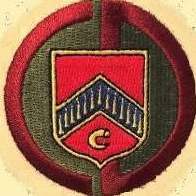
20th Century Trench Cap - Royal Engineers - KG V
Custermen posted a topic in Uniforms, Insignia, Equipment & Medals
I picked this cool trench cap up on ebay several years ago. I have a collection of ~100+ British and Commonwealth badges. I wanted to have a cool item that related to the Engineers. During the COVID quarantine, I joined a FaceBook group that would help identify and validate cap badges. After inquiring about several in my collection ---and finding that many were "re-strikes" or fakes--- out of boredom, I asked about the cap badge on this cap. At that time I didn't know much about the "economy badges". I knew this badge looked odd for some reason. They soon pointed out that this is a WW1 economy badge with the King George V marking. The conclusion is that this soldier lost his WW2 issue badge somewhere in the desert of North Africa. Someone pulled this WW1 economy badge out of his kit and used it. Just a theory. Royal Engineers Trench cap and British dust goggles. (Dust goggles are what you see General Rommel wearing. They captured a supply at Tobruk.) The liner appears have melted to the top. Maybe this was caused by exposure to the desert sun. The melted liner has stuck to the top of the hat. There is some discoloration which is not very clear in this photo. Royal Engineers Cap Badges: King George V (economy) and King George VI General Services Buttons -

20th Century British Army and RAF contract numbers Part 1: 6/CLO...*
numbersix posted a topic in Uniforms, Insignia, Equipment & Medals
Between about 1944 and 1959/1960 Uniforms were frequently marked with a contract code in the format of 6/CLO/numberstring/number/CB46letter. The earliest variant I have found is a 1944 issue of the 44 Pattern Mess Tin Bag, marked 6/AF/0003; interestingly a 1966 production of the 44 Pattern Mess Tin Bag, by the same manufacturer, uses the same contract number (I believe contract numbers changed when the pattern for that item was changed/modified). The earliest 6/CLO/ proper contract code I have found is 6/CLO/N812/7 for a Bush Jacket by an unknown manufacturer dated 1947. Prior to 1950 the inclusion of a contract code is relatively rare on white labels; it is really in the 1950s that they become more common, starting with RAF issue New Pattern uniforms: 6/CLO/7804/1/CB46B, War Service Dress Blouse NP, FW Harmer & Co Ltd, 1950 I believe the /1/ indicates the manufactere, for 6/CLO contract numbers each manufacturer was assigned a number for that specific item so if 5 manufacturers are making the same item then each of them would use the same item contract number but with a different manufacturer number. So each item will have identical contract numbers except for the manufacturers numbers. Thus, for example, I think there were at least 9 Manufacturers of the following item: 6/CLO/12759/2/CB46B, Coat Great OA New Pattern, Alfred Polikoff Wales Ltd, 1951 6/CLO/12759/3/CB46B, Coat Great OA New Pattern, S Simpson Ltd, 1951 6/CLO/12759/6, Coat Great OA New Pattern, H Phillips, 1951 6/CLO/12759/8/CB46B, Coat Great OA New Pattern, Windsmoor (Macclesfied) Ltd, 1951 6/CLO/12759/9/CB46B, Coat Great OA New Pattern, James Smith & Co (Derby) Ltd DERBY, 1951 In general during white labels will have a description of the clothing item, a size indication, the name of the manufacturer, and the date it was made. Up until about 1960 the date on the label can also be cross referenced with the /|\ Pheon/Broad Arrow mark which is printed directly onto the fabric (not on a label) and the associated letter code. So all the above Coat Great OA New Pattern are Broad Arrow stamped with a 'B' or a 'C', indicative of 1951 (these letters do not perfectly correspond to calendar year, so may indicate financial year or somesuch. 'B' indicates 1950/1952 and 'C' indicates 1951/1952). All the contract numbers of this type appear to conform to a sequential list, there is some evidence that some items were manufactured for over a year but there are very few instances of out of order contract numbers and/or label dates. The most recent use of the 6/CLO/ contract code I have found so far is 1959: 6/CLO/43391/CT4A, Coat Great Officer's RAF NP, Unikit Limited, 1959 By 1960/1961 the contract code format had changed to 78/CLO/... of which I shall detail further in Part 2. *The Royal Navy appear not to use 6/CLO contract numbers but rather the Admiralty Vocab. identifier instead. -
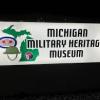
20th Century My MkII and Mk 6 helmets
ScottG posted a topic in Uniforms, Insignia, Equipment & Medals
I am no expert on these and they were more targets of opportunity when I obtained them. I found the MkII at a local antique store a few years back and it was only $15.00 so I just bought it as the net was worth that. I am pretty certain that the previous owner put it on there but its a decent two color net and the helmet has a 42 dated liner. The top padding is deteriorated to a small circle and that is about all I know on this one. Scott -
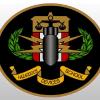
20th Century Rare Political Warfare Executive & 31st Independent Brigade Insignia
Tonomachi posted a topic in Uniforms, Insignia, Equipment & Medals
Earlier today some pretty scarce WW2 British elite unit insignia sold on eBay for a great deal of money. The Political Warfare Executive (PWE) patch sold for $3674.81. They were what we refer to today as a Psychological Warfare type unit. They were initially part of the British SOE. Their patch is a lapwing inside of a diamond. The lapwing was chosen as during flight they screech out "peewit" which sounds like the abbreviation of their unit PWE. There are copies of this patch out there so if it doesn't look like the one pictured below stay away from it. The other patch was used for a short period of time by the WW2 British 31st Independent Brigade which became the 1st Air Landing Brigade of the British Parachute Regiment. This patch sold for $555.86. This patch is of a heraldic bull rising from a crown. It is the scarcer painted version as when they converted to an Air-Landing Brigade a printed version was produced. Lastly a scarcer WW2 British paratrooper wing variant sold for $432.34. These all came off of a period blanket (see photo). -

20th Century 1955 Dated Camo Mk II HSAT
Mark K posted a topic in Uniforms, Insignia, Equipment & Medals
I thought I might share this rather interesting example of a 1955 dated camo painted British Mk II Helmet Steel Airborne Troops ( HSAT ) that I have had in my collection for some time... It shows matching wear to the helmet body and liner that is indicative to a field used example with a chalked in 63 to the front.. Who can say when the camo was applied but IMO it has been on there for many years it has that been there done that look I like so much in my helmets... The liner is in a size 6 7/8 and was produced by C.C.L (Charles Collett Ltd, London England ), Regards Mark -
Thanks to member Tonomachi, I have identified these wings that I have had stored away for years. Apparently these were awarded to Artillery Officers who cross trained as pilots as Air Observation to better control artillery fire. These were padded but never worn and are probably post WWII but according to Tonomachi this style changed in 1957. His sharp eye and knowledge also identified the word UNIQUE under the flaming ball. Tim
-

20th Century 1944 Dated BMB Mk II HSAT
Mark K posted a topic in Uniforms, Insignia, Equipment & Medals
This particular example looks like it shows a we bit of usage 1944 dated BMB Mk II HSAT that still retains almost all of it's original factory painted textured finish and the net has left a ghost impression on the exterior of the helmet body... The liner and helmet body where produced by Briggs Motor Bodies Ltd. of Dagenham, England ( BMB ) It is in a nice large size of 7 3/4 the crown pad is present with the faint outline of chalk around it , The net is a mid to late war manufactured and the scrim has been tied on and woven through it for many years IMO if this helmet was used at all it would have been for a very short period of time either very late war and or early post war ... It is hard to make out in the images but there is a rather interesting drawing on the dome pad it is of a small cottage on the edge of a cliff over looking the ocean with birds aloft and a small boat out on the horizon, perhaps it was drawn out of boredom a soldier thinking about home and or drawn by a child that had found a new medium to doodle on we very likely will never know.. Regards Mark -
 I believe this Imperial Good Companion Model T typewriter was used by Queen Alexandra’s Imperial Military Nursing Service (Reserve) staff, based on the QA/R on the cover. It is in good working order, found in a bric-a-brac shop about 25 years ago.
I believe this Imperial Good Companion Model T typewriter was used by Queen Alexandra’s Imperial Military Nursing Service (Reserve) staff, based on the QA/R on the cover. It is in good working order, found in a bric-a-brac shop about 25 years ago.

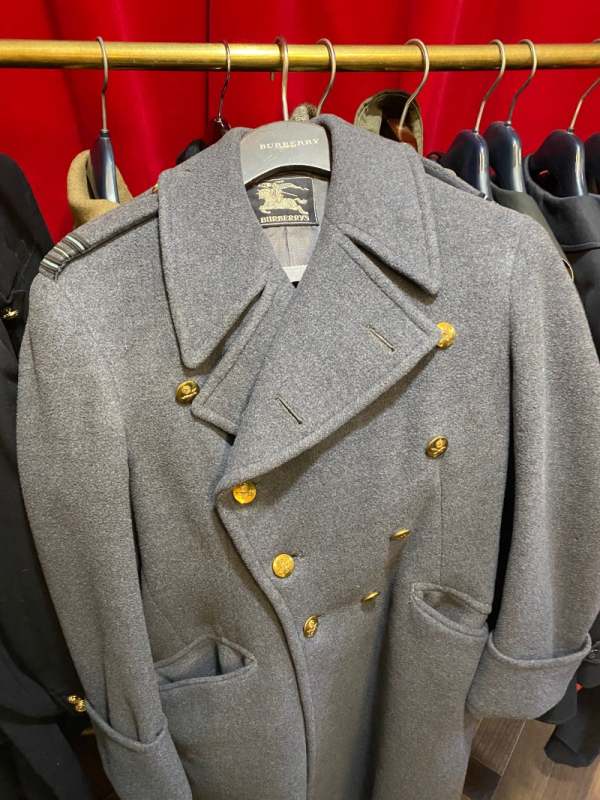



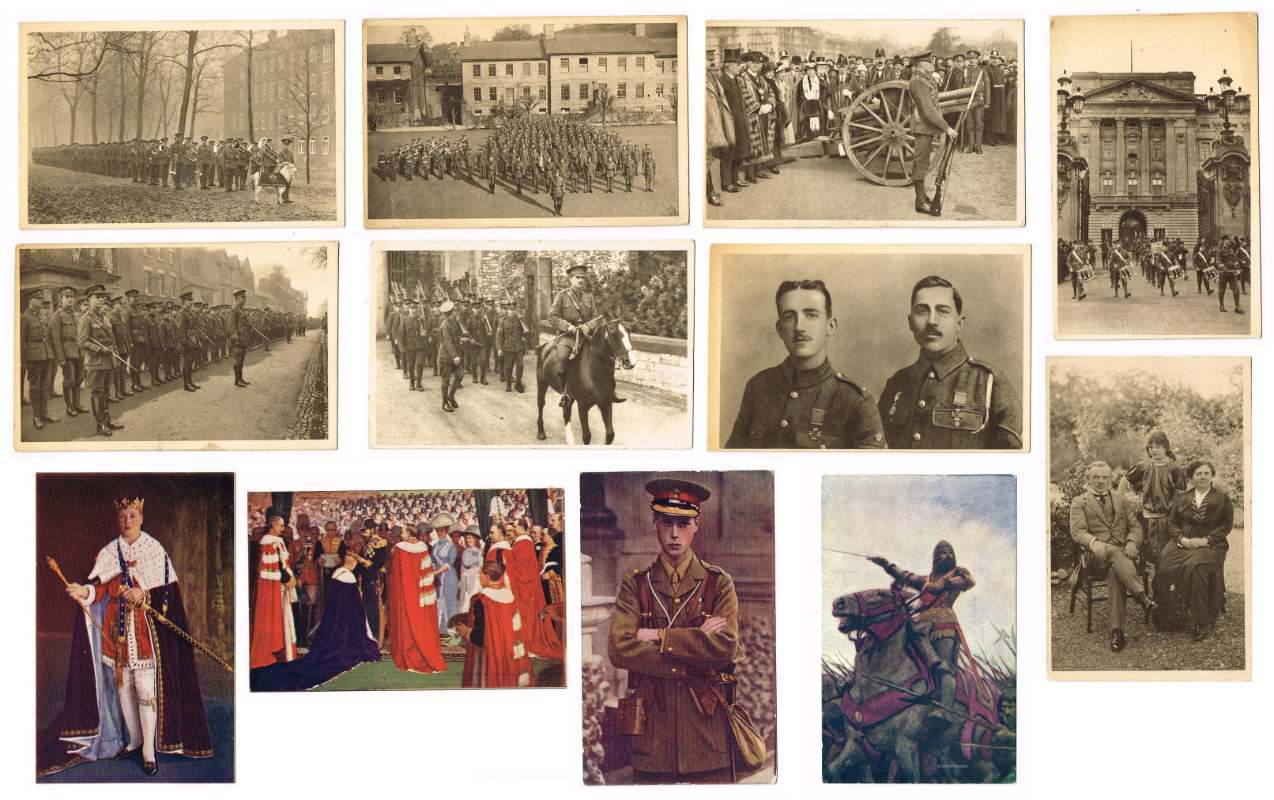











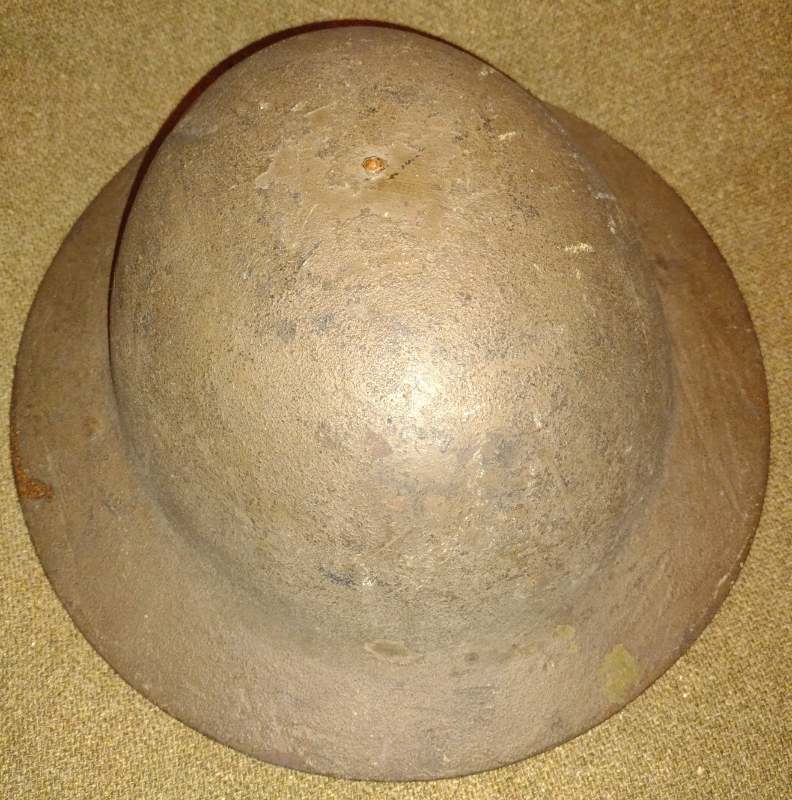








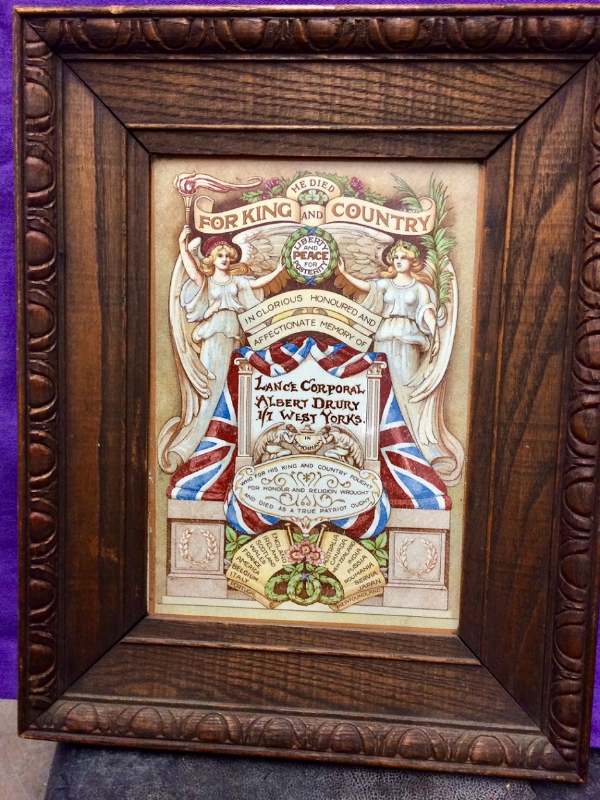






























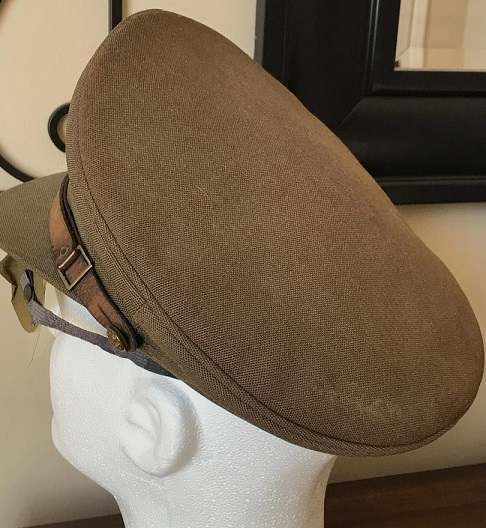

.jpg.1221434c956a2c78bae0f75a606d9fb2.jpg)
.jpg.7b2e3dbfc2a7fbd7c09525743a6f72ed.jpg)
.jpg.4979babcb49be97457947c69ceee817c.jpg)
.jpg.6b2fc7b6c05fa26ccd26610ea3dd41c2.jpg)
.jpg.d027bd856bed1cbf9023a3e7a7cc129a.jpg)
.jpg.a52a187aa9d1561b7e8efcc68fcd0b45.jpg)
.jpg.12868d5f3db2edfda1bc3d58a0adaa1a.jpg)


